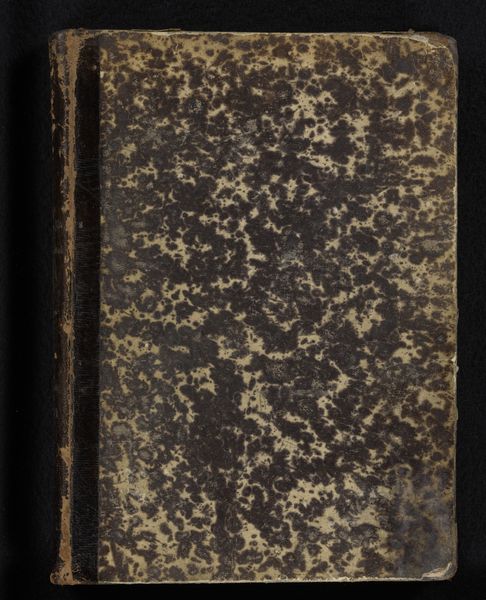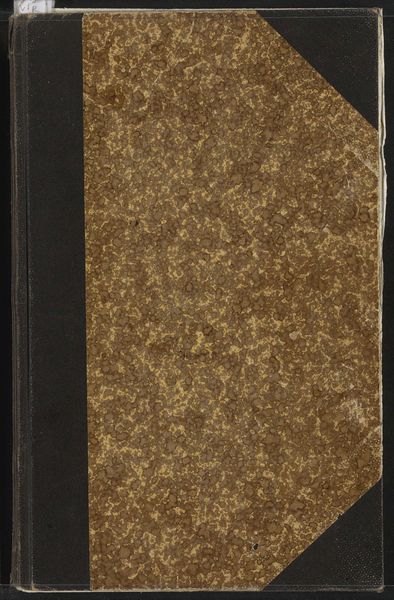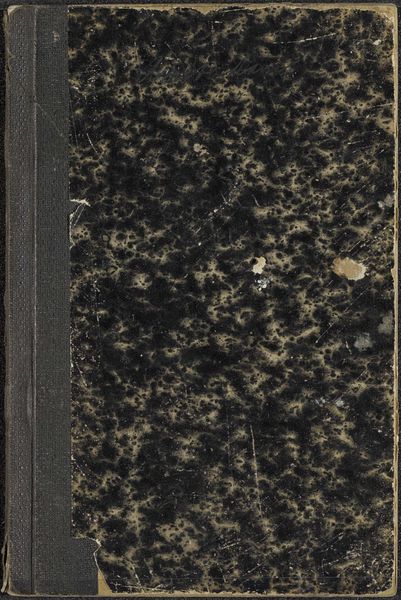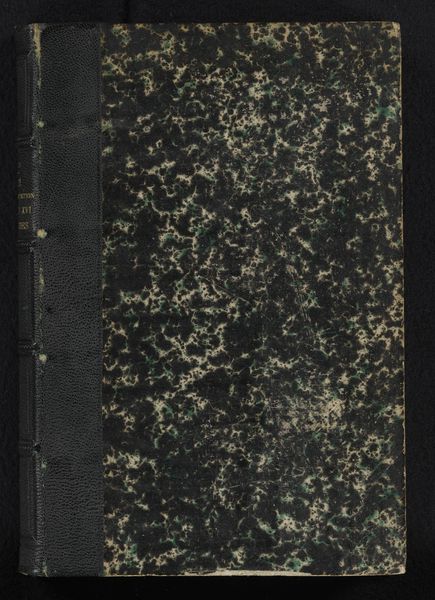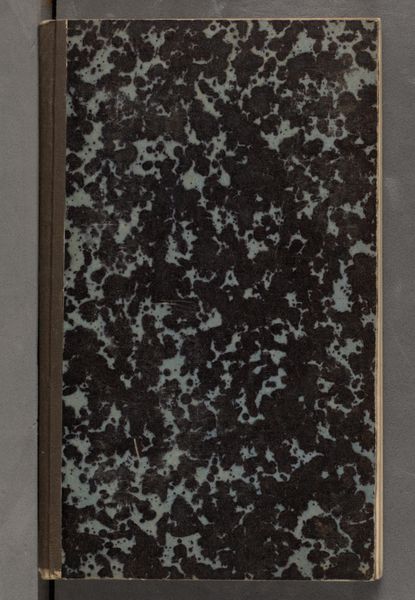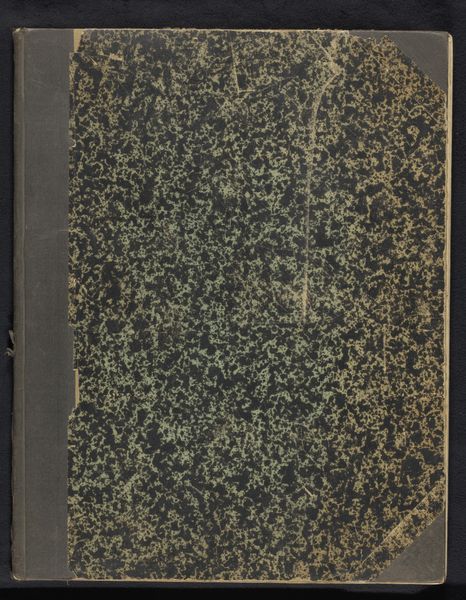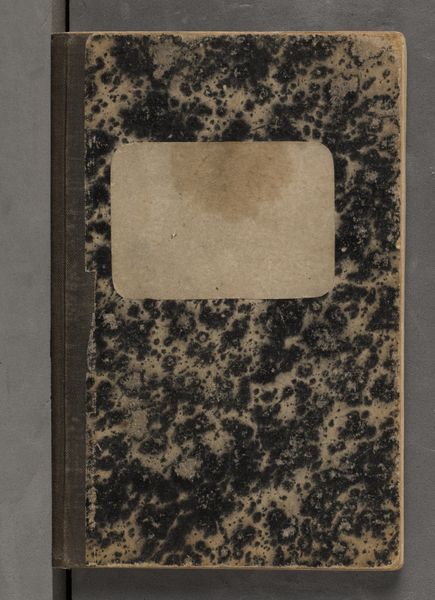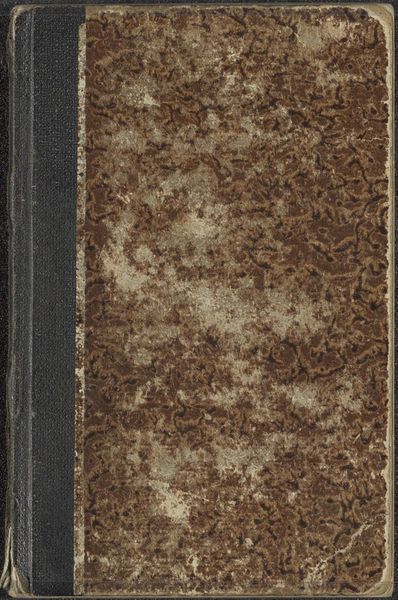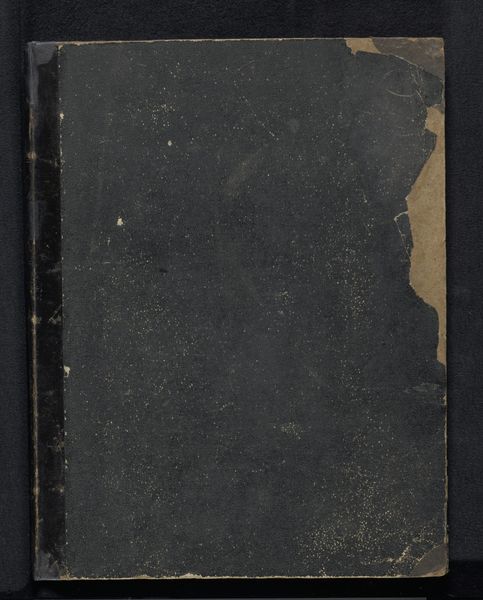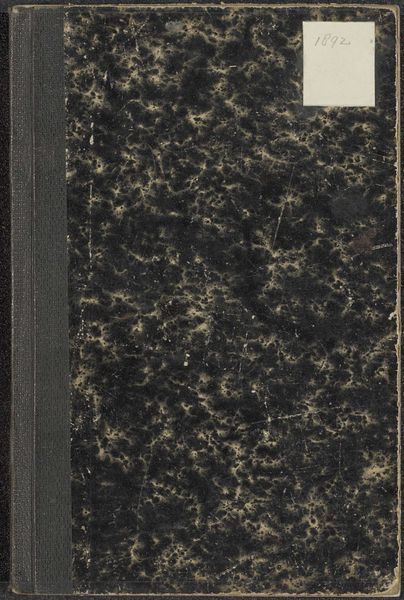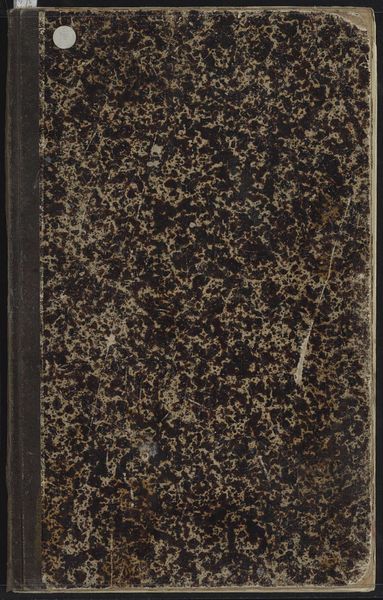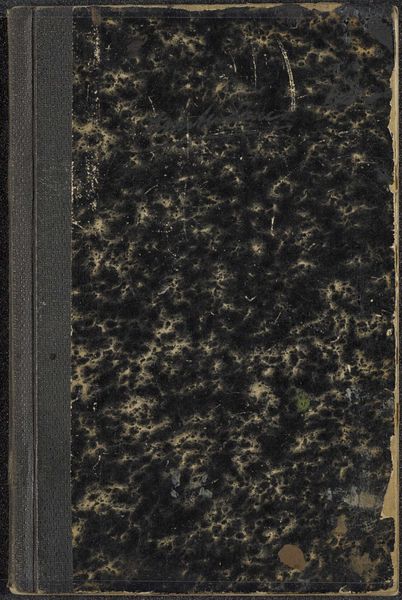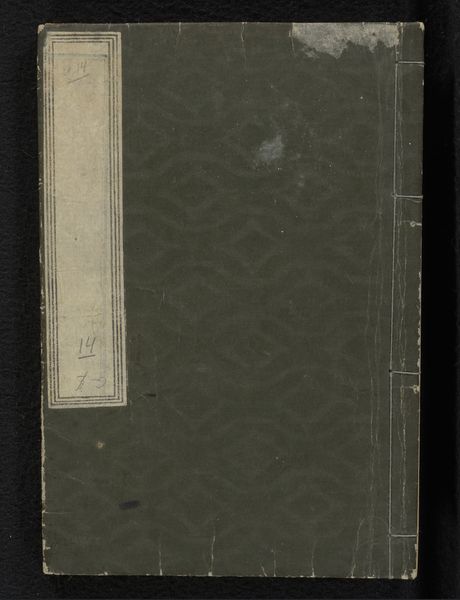
print, paper
# print
#
paper
Dimensions: height 360 mm, width 270 mm, thickness 11 mm, width 530 mm
Copyright: Rijks Museum: Open Domain
Curator: We are looking at "Album met prenten van Adriaen van Ostade", crafted between 1846 and 1900. It resides here at the Rijksmuseum. The album contains prints on paper. Editor: Wow, that mottled cover. It looks like the surface of a distant planet, a scorched earth, maybe even mold spreading through old secrets. What stories this book could tell! Curator: Indeed. Its aged appearance invites consideration. The marbling effect is quite striking. As an object, the album suggests preservation, an attempt to safeguard artistic heritage for future generations. The spine shows a different color of material. The dark, chaotic patterns of the cover are contrasted by the organized linear structure of the spine, creating a tension. Editor: I like the sense of a hidden world. I'm imagining lifting the cover and finding vivid characters and miniature dramas—all those Ostade scenes of everyday life bursting from within this muted exterior. Curator: Van Ostade was known for genre scenes. Think carefully rendered peasants, interiors teeming with details about their lives, often tinged with humor or moral commentary. Within, the structure of the prints offers insight into social and cultural narratives of the time. Each print being a microcosm. Editor: So, it's a contrast, really. The quiet cover versus what I imagine as busy prints, full of life and stories. Maybe like the difference between keeping a diary private and opening up the soul to strangers. It is compelling! Curator: I think your assessment hits upon the dialogue the piece encourages: private versus public, containment versus exposure. And within the structured presentation of an album lies that contrast which enhances its artistic expression. Editor: It gives new meaning to 'judging a book by its cover', doesn't it? Thanks for bringing this fascinating work to our attention. Curator: My pleasure. Examining the album as an artifact, distinct from its contents, really shows something about art ownership, interpretation, and time's inevitable mark on objects.
Comments
No comments
Be the first to comment and join the conversation on the ultimate creative platform.
